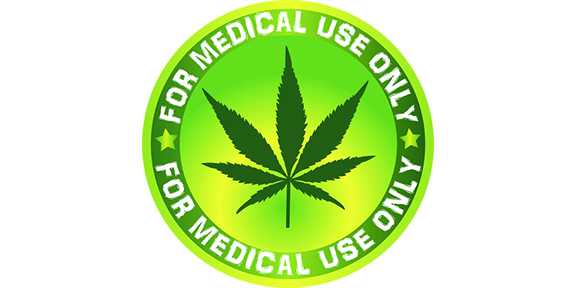Medical Marijuana: A Further Look into SQ788
There have been a lot of arguments for and against State Question 788. My last blog simply pointed out some comparisons between our proposed regulation and other states. Today I am going to dive into some of the claims circulating around to give you more information before you vote.
The following questions will be reviewed:
- Does state question 788 allow for smoking in public places
- Does state question 788 legalize ½ ounce for everyone
- Does state question 788 allow veterinarians to prescribe
- Does state question 788 allow medical marijuana to be used on the job
- Have there been any deaths related to marijuana
I think you will find these answers very interesting as there is some truth on both sides of the fence. It is important to understand what is NOT being said though.
The Department of Health released a set of proposed guidelines on June 19. It is important for you to know some of their proposed recommendations, so if applicable, I included it below with each section. Keep in mind that these guidelines are a rough draft which means subject to change. It appears they just added clarification of each section of the regulation and defined some of the regulations further. If you want to read all 63 pages, you can find it here:
Here we go….
Does #788 allow for smoking in public places?
- There is no wording at all about where it is allowed or not allowed. The only restriction is a marijuana establishment is prohibited within 1000 feet from any school (public or private).
- The Department of Health recent release of proposed guidelines state the restrictions on smokable medical marijuana will be subject to the same regulations as tobacco with the “smoking in public places and indoor workplace act” mentioned above. So, let’s look at this Act:
- Oklahoma Smoking in Public Places and Indoor Workplaces Act prohibits smoking and lighted tobacco products in any form in indoor places open to the public, workplaces (even if workers are unpaid volunteers), on public transportation, and in outdoor areas of zoos. Smoking is not permitted in schools and on school grounds. Smoking is not permitted in daycare and childcare centers during hours of operation or in health facilities (except for designated rooms in nursing homes and assisted-living facilities) (OK Stat. Tit. 21 Sec. 1247).
- It defines “Smoking” as the carrying by a person of a lighted cigar, cigarette, pipe or other lighted smoking device;
- This public places act does allow smoking in these instances:
-
-
-
- Licensed charitable bingo games
- 25% of hotel rooms
- Private offices
- Outdoor seating areas of a restaurant
- Stand alone bars or cigar rooms
-
-
**So, if I am reading this act correctly, technically someone could smoke a joint in an outdoor seating area of a restaurant or at a bar???
***How a true medical marijuana regulation should read regarding public use:
- No patient shall:
- Engage in the medical use of marijuana in a way that endangers the health or well-being of any person; or
- Engage in the medical use of marijuana in plain view of, or in a place open to, the general public.
Does #788 legalize ½ ounce for anyone?
- Technically, the regulation does not allow for recreational use and is classified as medical use only. HOWEVER, there are NO qualifying conditions specified for this regulation. This means that all a person has to do is say they “need” it and they can be granted access to medical marijuana. Other states with medical marijuana have a list of approved medical conditions that a person must have before being given a script for medical marijuana.
****How a true medical marijuana regulation should read regarding medical use:
- Medical use of marijuana shall be allowed for persons suffering from debilitating and chronic medical conditions which includes……
- For example, Florida specifies these conditions qualify for use:
- Cancer, epilepsy, glaucoma, HIV/AIDS, post-traumatic stress disorder, amyotrophic lateral sclerosis, chron’s disease, parkinson’s disease, multiple sclerosis, terminal illness, chronic nonmalignant pain and they also have an extenuating circumstance clause.
- The Department of Health recent release of proposed guidelines states a person can be licensed for medical marijuana if “the physician has determined the presence of a medical condition (s) for which the patient/applicant is likely to receive therapeutic or palliative benefit from use of medical marijuana”. It still did not define any medical conditions.
Does #788 allow for veterinarians to prescribe?
- The regulation states an Oklahoma board certified physician is eligible to prescribe. HOWEVER, there will be a debate on what constitutes as a physician. Can dentists prescribe it? Can nurse practitioners prescribe? Can veterinarians prescribe? All of these entities are board certified so who knows – the wording is ambiguous because it doesn’t define anything. This leaves it open for interpretation and debate in legal court.
***How a true medical marijuana regulation should read:
- Prescribers must be a medical doctor (MD or DO) who have an active Oklahoma state license for the past two year and an active DEA license (which is a license that allows prescribing for narcotics). The medical doctor must be in good standing and must not have any prior convictions or restrictions. Wording must also be included that defines what a physician-patient relationship is in order to prevent what I would call “drive-by” recommendations.
- Department of Health is proposing this type of wording and does define the physician-patient relationship in depth. If it all stays in the guidelines they did a good job on this part.
There have been no deaths associated with marijuana according to DEA
- This is a true statement based on the DEA website. However, numerous studies report an increased risk of all causes of morality associated with cannabis like motor vehicle accidents and occupational injuries. The use of cannabis is also being implicated in other causes of death primarily due to the impairment effects rather than the cannabis itself.
- There is a significant increase in emergency room visits associated with cannabis. According to National Capital Poison Center “young children have been seriously poisoned by swallowing medical marijuana.” A study reported that pediatric marijuana intoxication cases reported to poison control increased by 30% EACH year from 2005-2011. Children in states where marijuana was legal had more severe symptoms and were more likely to be admitted to a critical care unit compared with those in states where marijuana was not legal. Marijuana intoxication can occur when a child accidentally ingests a marijuana product or inhales marijuana smoke. Symptoms can vary based on the child’s age and size but often include sleepiness, difficulty breathing, seizures or even coma.
- The Department of Health recent release of proposed guidelines states the physician must discuss the risks and benefits of the use of medical marijuana and must include:
- The risk of cannabis use disorder…
- The risk for exacerbation of psychotic disorders and adverse cognitive effects for children and young adults
- The variability and lack of standardization of marijuana preparations and the effect of marijuana
- The increased risk of motor vehicle crashes while under the influence of marijuana
- I only included this because we have to remember that marijuana is a drug and we have to respect it like other drugs. I don’t like the camps that tout marijuana is completely safe and I don’t like the alarmists that say marijuana is the worst drug around. Any drug can cause issues, this is why proper education becomes important.
Does #788 allow medical marijuana to be used on the job?
- NO, the regulation states that employers may take action against a person holding a medical marijuana license if they use marijuana during work hours or if they possess it at work.
What about employers drug testing?
- It is very important to understand the limitations of drug testing.
- Marijuana can be tested in urine, blood and hair analysis.
- Urine will show marijuana up to 3-5 days for infrequent users and up to 30 days for chronic users
- Blood will be positive up to 7 days for chronic users
- Hair will be positive for 90 days after use.
So, let’s spell this out. The argument that employers may just drug test their employees and be able to use this to discipline someone with a medical marijuana card is not useful. A person can use marijuana on a weekend and may still test positive for it the next Friday. Employers will not be able to use this information at all because of the long half-life of cannabis. Of note, there is a special, expensive test that may be able to detect concentrations of THC which should help in determining when it was last used but the parameters have not been clearly defined. Hopefully, this technology will become more accessible and some legal guidelines will be defined at what constitutes recent use.
I have taken a lot of heat over reviewing this state question and want to give you some insight to where I am coming from. I believe in the saying of just because everyone else is doing it doesn’t make it right. I want Oklahoma to get this right.
Here are my actual opinions which may be out there a bit, but why can’t Oklahoma have the best medical marijuana regulation around?
- I want them to specify which medical conditions may apply for a license with the addition of a review board that a physician can write a letter of exception and have it considered in a timely manner because there are always special circumstances. The Department of Health still isn’t defining medical conditions. FYI: Texas approved it for epilepsy only as their starting point so there is a huge range. The key is to get some stricter language as a starting point and I lean towards Florida’s which I referenced above. If they put in this language then we really have a medical marijuana regulation, not recreational.
- I want the physicians to be trained on how to prescribe medical marijuana so it is an actual script that states the THC:CBD ratio, the number of times a day to take it and for how long. I think it should also have refills and require periodic reviews to determine if it is the right ratio/dose rather than having a dispensary determine all of that. I just can’t imagine giving a patient a license for thyroid medication. They take this license to the pharmacy where the CASHIER at Walgreens (not the pharmacist) grabs a random dose of thyroid medication and gives it to you
- I want the dispensaries to have training also (like pharmacists do).
- I want testing on every batch produced defining the THC:CBD ratio, pesticides, contaminants, heavy metals and other things. Then I want it labeled in the dispensary. If the Department of Health proposed guidelines stay, then it will require testing of each batch to verify the THC:CBD ratio, pesticides, contaminants as well as labeling which is really good.
- I want it spelled out that marijuana cannot be smoked in a public place.
- I don’t want edibles to be a part of Oklahoma’s regulations. If someone needs an edible preparation then they just add the prescribed dose of tincture to a teaspoon of their favorite food so they can be sure they are getting the right amount – no more & no less. Cooking it in food delays the onset of action of the marijuana and people can often end of eating more thinking they didn’t get any effect until suddenly they have too much.









